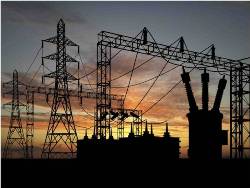 The nation’s electric grid isn’t something most of us think about very often, except perhaps when an event such as the infamous 2003 blackout in the northeast takes place. That event affected an estimated 55 million people in the U.S. and Canada, some of whom went without lights, telephone, transportation, banking, sewage services, and water for days. The cause turned out to be hot summer temperatures and our hunger for more air-conditioning power, which caused a generating plant in Ohio to switch offline putting a strain on overhead transmission lines. Those lines then overheated, expanded and sagged, coming in contact with overgrown trees. In minutes, line after line failed. The cascading effect that resulted ultimately forced the shutdown of more than 100 power plants.
The nation’s electric grid isn’t something most of us think about very often, except perhaps when an event such as the infamous 2003 blackout in the northeast takes place. That event affected an estimated 55 million people in the U.S. and Canada, some of whom went without lights, telephone, transportation, banking, sewage services, and water for days. The cause turned out to be hot summer temperatures and our hunger for more air-conditioning power, which caused a generating plant in Ohio to switch offline putting a strain on overhead transmission lines. Those lines then overheated, expanded and sagged, coming in contact with overgrown trees. In minutes, line after line failed. The cascading effect that resulted ultimately forced the shutdown of more than 100 power plants.
The Department of Homeland Security (DHS), with support from the electric utility industry and the Department of Energy (DOE), wants to be prepared for any potential large-scale blackout that could impact the extra high voltage (EHV) transformers. The U.S. electric grid has three main components: generation (creation of electricity), transmission (long haul transport of electricity), and distribution (shorter distances connecting the electricity to the consumer/end user). The electric grid is complex with more connection points than it had even a few years ago. The U.S. has 80,000 miles of extra-high voltage (EHV) transmission lines making up the backbone transmission grid that enables the long-haul transport of electricity for our nation. EHV transformers are critical pieces of equipment on the transmission grid. 90% of consumed power passes through a high voltage transformer at some point. If these transformers fail especially in large numbers, therein lies a very big problem.
EHV transformers are huge, weighing hundreds of tons, making them difficult to transport – in some cases specialized rail cars must be used (and there is a limited supply of these). Many of the EHV transformers installed in the U.S. are approaching or exceeding the end of their design lifetimes (approx 30-40 years), increasing their vulnerability to failure. Although the industry does maintain limited spares, the ability to quickly and rapidly replace several transformers at once would still be a challenge. Because of these issues, the need for emergency replacement EHV transformers was identified as a top priority by the Energy Sector.

Sarah Mahmood, a DHS Science and Technology Directorate (S&T) program manager, is addressing these issues through S&T’s “Recovery Transformer (RecX)” program. She is overseeing the design and development of a prototype fast-turnaround EHV transformer scheduled to be tested operationally in March 2012.
“The goal of the spring 2012 exercise is to conduct a full, in-grid, pilot demonstration, including the transportation, delivery, installation, and commissioning of the prototype RecX in a matter of days, not weeks or months, as with traditional EHV transformers.” says Mahmood.
The RecX prototype is designed to be modular, smaller and lighter than a traditional transformer, allowing for easier transportation and more rapid installation, enabling faster recovery in the event of an emergency.
Many events could cause such catastrophic failures: terrorism of course, but also such unavoidable events as natural disasters: hurricanes and tornadoes, and even solar plasma flares disrupting Earth’s magnetic field.
The RecX is being built by the Electric Power Research Institute’s (EPRI) contractor, the ABB Group of St Louis, MO, and, when completed, will be loaded onto a series of tractor-trailers and caravanned to Texas. There it will be installed and commissioned in the CenterPoint Energy grid, outside the Houston area. “We’re very excited about the upcoming pilot demonstration and the opportunity to validate our concept and design,” says Mahmood.
To request more information about this story, please e-mail st.snapshots@hq.dhs.gov.
